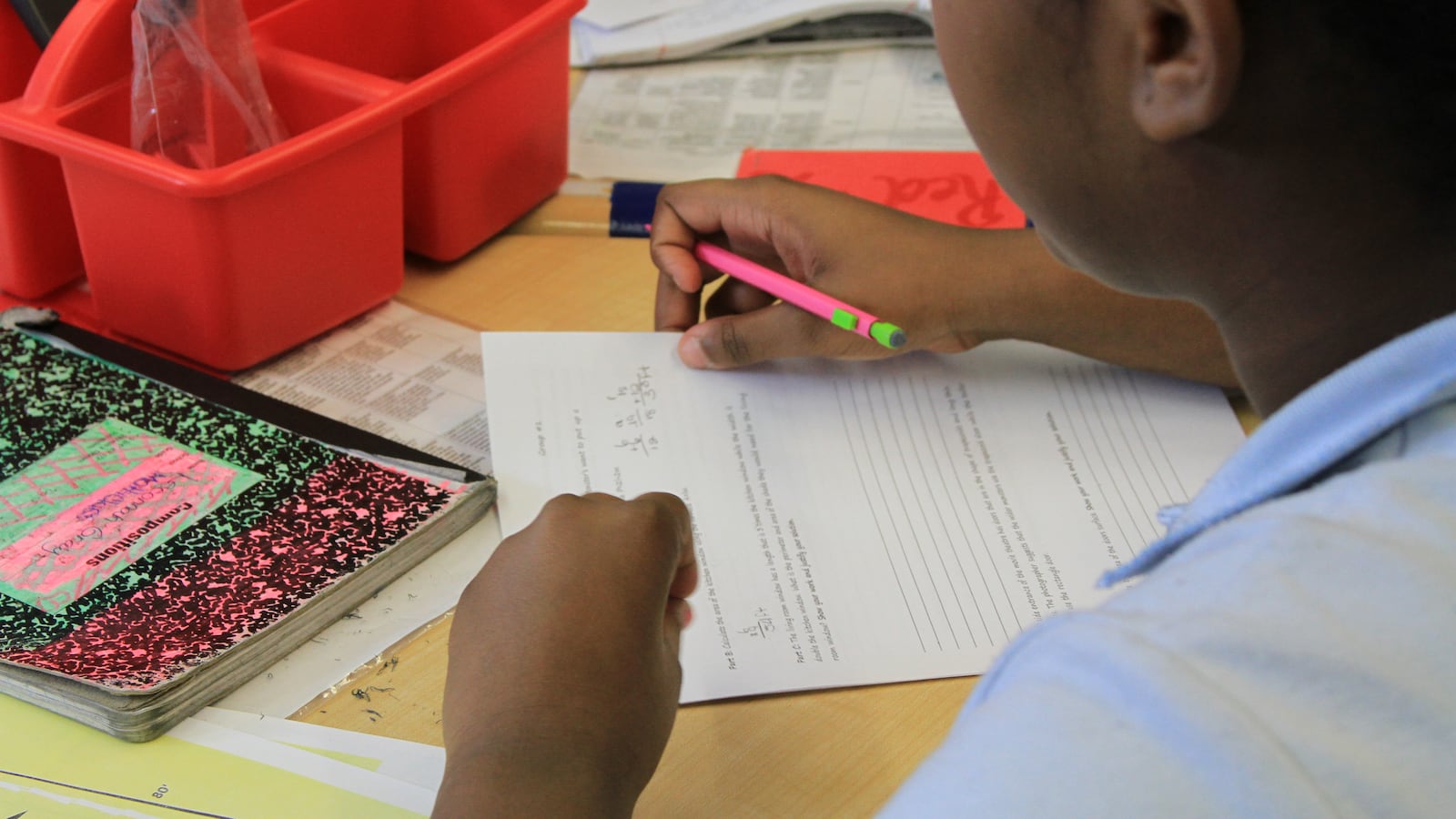New York is one of only two states where more students are earning proficient scores on the “nation’s report card” than are passing the state’s own standardized tests.
That’s according to a new analysis from the nonprofit Achieve, which advocates for tougher standards and tests. The organization compared passing rates on each state’s exams in 2013-14 with its students’ scores on the National Assessment of Educational Progress, given to a representative sample of students in fourth, eighth, and twelfth grade nationwide.
Typically, the score gaps are reversed: States say most of their students are proficient, while NAEP scores paint a grimmer picture. But two years after introducing new, tougher state tests, New York appears to have moved the furthest in the other direction.
In eighth-grade math, 22 percent of students earned what New York state called a passing score last school year, while 32 percent were deemed proficient on the NAEP exams. In fourth-grade reading, 33 percent passed the state test, while 37 percent of students earned a proficient score on the NAEP test. (Massachusetts was the other outlier, with more students earning a proficient score on the eighth-grade math NAEP test than on the state’s own tests.)
New York is “at a level of rigor that NAEP is, in terms of what it means to be proficient,” Achieve President Michael Cohen said. “And that’s a pretty significant shift for any state, and a shift for New York, and it says they set the bar pretty high.”
NAEP scores are closely scrutinized for offering a stable measurement of student achievement that can be used to compare states, where standardized tests often measure very different skills. In calling on states to adopt tougher standards in order to receive millions in federal Race to the Top dollars, something New York did in 2010, federal officials pointed to the gaps between NAEP and state test scores as evidence that states were setting the bar too low.
New York education officials applauded the results on Thursday, saying they illustrated the success of the state’s effort to develop more honest measurements of student knowledge. That movement has its roots in criticism dating back to 2007, when state test scores began climbing though students’ scores on the national tests were flat. By 2009, state officials were acknowledging that its math tests had become too simple and predictable, and a later analysis showed that many students were passing the state exams but struggling in high school.
“The report makes it clear: New York State’s assessments tell teachers, parents, and the public where our students are, and where they need to be,” Regents Chancellor Merryl Tisch said in a statement.
The increasing difficulty of the state tests have been met with significant pushback from some who say parts of the tests are now inappropriately difficult, and parents who say the changes have contributed to classrooms are dominated by test prep. This year, anti-testing activists estimate that parents opted more than 150,000 students out of the tests statewide, though the share was much smaller among city students.
“The landscape is changing,” said Janine Sopp, a parent member of Change the Stakes who has helped organize the city’s opt-out movement. “If they’re committed to keeping the the standards and the high-stakes tests, they have to sell us on this story that these are looking good. And I don’t think they do.”


